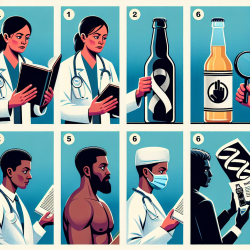As a practitioner in the field of public health or education, staying informed about the latest research is essential for improving your practice and making a meaningful impact. One such area of interest is the implementation and effectiveness of alcohol health warning labels (AWLs). A recent rapid review titled "Alcohol Health Warning Labels: A Rapid Review with Action Recommendations" offers valuable insights that can enhance your skills and understanding in this domain.
The Role of Alcohol Health Warning Labels
Alcohol health warning labels are an established method for conveying information about the risks associated with alcohol consumption. These labels serve as a tool to increase awareness among consumers about the potential harms of alcohol, including social, chronic, and acute risks. The review highlights that AWLs have been implemented in various countries, with varying levels of effectiveness depending on design and messaging components.
Design and Messaging: Key Components
The review identifies several design elements that enhance the effectiveness of AWLs:
- Label Placement: Labels positioned on the front of containers are more likely to be noticed by consumers.
- Combination of Text and Images: Using both text and pictorial warnings increases attention and recall.
- Size and Visibility: Larger labels with clear, contrasting colors are more effective in capturing consumer attention.
The content of the message is equally important. Messages that include specific health risks, such as cancer or pregnancy-related warnings, tend to have a stronger impact on consumer behavior. Moreover, using causal language (e.g., "alcohol causes cancer") can enhance the perceived severity and effectiveness of the warning.
Implications for Practitioners
For practitioners looking to implement these findings, consider the following strategies:
- Advocate for Policy Changes: Engage with policymakers to promote the adoption of well-designed AWLs as part of a comprehensive public health strategy.
- Educate Your Audience: Use AWLs as a starting point for discussions with clients or students about the risks associated with alcohol consumption.
- Conduct Further Research: Encourage further research within your community or organization to assess the impact of AWLs on behavior change.
The Path Forward
The evidence supporting AWLs is growing, highlighting their potential as an integral component of multi-dimensional alcohol control strategies. By staying informed and actively participating in policy discussions, practitioners can play a crucial role in enhancing public awareness and promoting healthier behaviors.
To read the original research paper, please follow this link: Alcohol Health Warning Labels: A Rapid Review with Action Recommendations.










